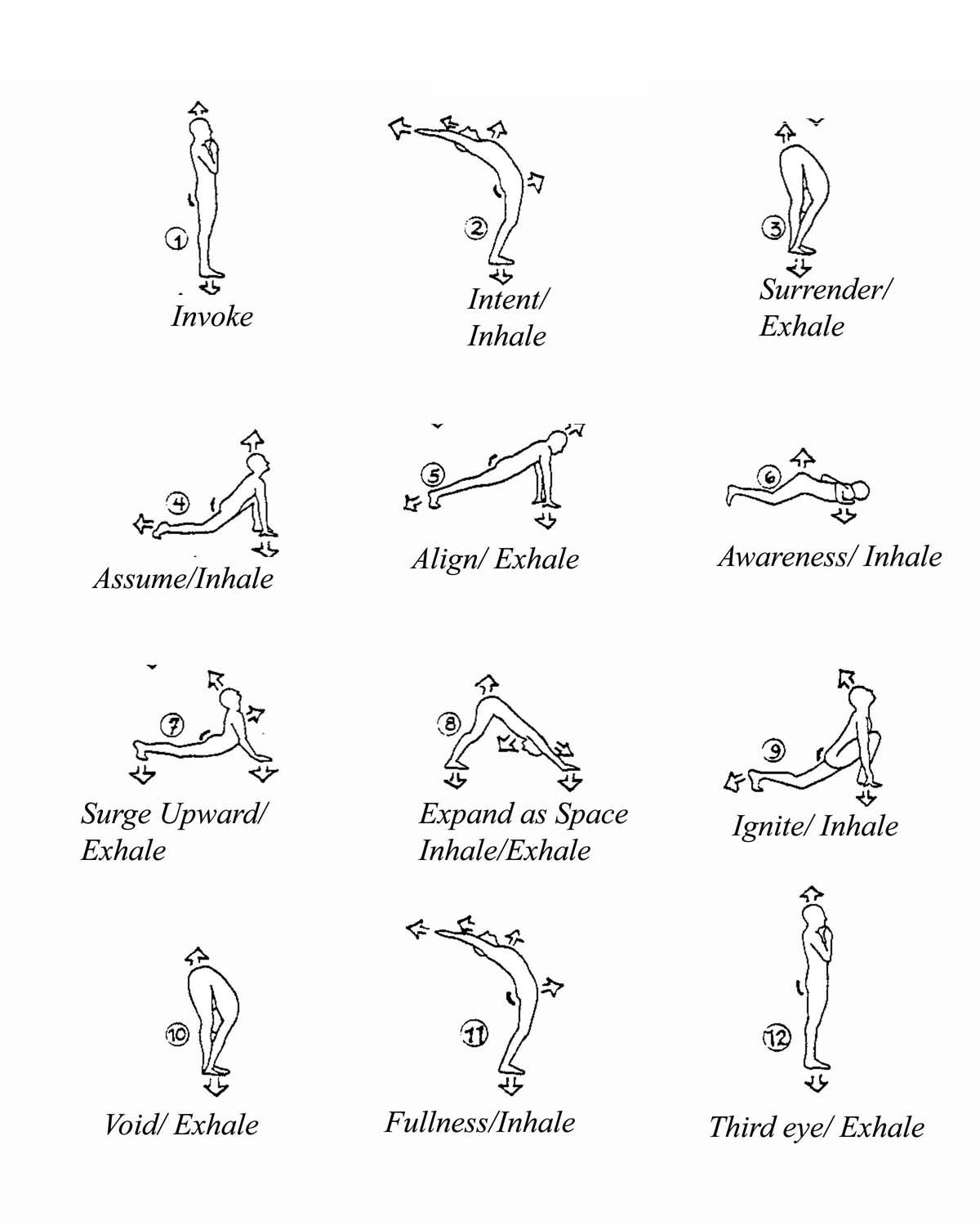

This Asana helps remove fat from the abdominal muscles and improves the flexibility of the spinal cord. Veerasana improves the blood supply to the joints of the body and also helps strengthen them. Keep your hands on both the knees in a meditative mudra. Then place the other foot on the opposite thigh. Traditionally it’s performed by bending your one foot as if you are sitting on your big toe. However, the one that is commonly practiced (Vajrasana type) is better for therapeutic and meditative purposes. There are two different variations of Veerasana are mentioned in Hatha Yoga Pradipika – one like simple ‘ Vajrasana type’ and another with ‘ Ardha padmasana like foot’. It’s named such because this asana gives heroic power and the ability to subdue like Mahaveer (Lord Hanuman).
TRADITIONAL HATHA YOGA SEQUENCE FULL
In hatha yoga, Veerasana is also known by its full name “Mahaveerasana”. Veerasana is another seated meditative posture. Gomukhasana is described to keep maintain prana balance in the body by preventing it from dissipating outward through the Vajra Nadi (at the bottom of the spine). Bring your left arm behind the back and interlock both hands behind your back. Raise your right arm and bend from the elbow. Put your right leg under the left thigh in a crossed position. To come into Gomukhasana, sit properly by keeping your back straight and extend the legs in front of you. The legs in position made in this asana somewhat resemble the face of a cow ( Go means cow, Mukha means face) both feet look like the ears and the crossed legs look similar to a cow’s face. Gomukhasana is the second hatha yoga asana, although not a meditative posture but ideal for sitting longer period. Gomukhasana (Cow face pose) Image Source: Canva You can achieve the concentration of mind with the regular practice of this Asana.Ģ. Dhyana Mudra in this asana improves the pulse beats and stabilizes them. This posture has a positive effect on the sciatica nerves. Swastikasana is said to stimulate the nadis at the back of the legs which carry energy to centers in the spinal column. Keep the wrists of both hands-on respective knees. Similarly, bend the right leg and place it between the left calves and thigh. To do this Hatha Yoga Asana, keep your legs at a distance of 1 foot, bend the left leg from the knee and place it under the inner side of the right thigh. This asana has a very calming and sacred effect, hence induces the same capacity in the body. The term ‘Swastika’ is regarded as an auspicious symbol that represents fertility and creativity. It’s a cross-legged meditative posture where the feet are kept under the thigh on both sides forming a similar pattern like ‘Swastika’. Swastikasana is the first hatha yoga asana described in the first chapter of HYP. Swastikasana (Auspicious Pose) Source: canva Out of these 15, 11 are sitting postures which denotes hatha yoga asanas more emphsize on meditation and relaxation purpose. The 15 asanas of Hatha yoga are Swastikasana, Gomukhasana, Veerasana, Kurmasana, Kukkutasana, Uttanakoormasana, Dhanurasana, Matsyendrasana, Paschimottanasana, Mayurasana, Shavasana, Siddhasana, Padmasana, Simhasana, and Bhadrasana. Different ancient texts (that came from time to time) on Hatha yoga can help us know how many poses are there in yoga. The hatha yoga we know today came through the lineage of many great teachers and their disciples. Prana flowing without any obstacle is the only key to a disease-free body. Beyond stretching and other physical effects, hatha yoga asanas have psychological means – It makes Prana moves freely. Hatha yoga asanas are the specific bodily positions that aim to open energy channels and psychic centers of the body. According to Hatha yogis, self-discipline and self-control (what Yama & Niyama teaches) are only possible to practice when you’re physically prepared. In hatha yoga, asanas are performed as the first limb instead of Yama and Niyama in contrary to Patanjali’s eight limbs.

This idea builds a foundation for the physical postures, we know today as hatha yoga asanas. The very basic idea behind hatha yoga origin was the purification of the body and its elements before indulging in meditation (mental) practice. Before the hatha yoga period, asanas were meant for meditation purposes only.

It’s so because traditional hatha yoga texts are the only references that describe physical postures with such great detailing and importance. Hatha yoga is called the ‘yoga of asanas’.


 0 kommentar(er)
0 kommentar(er)
